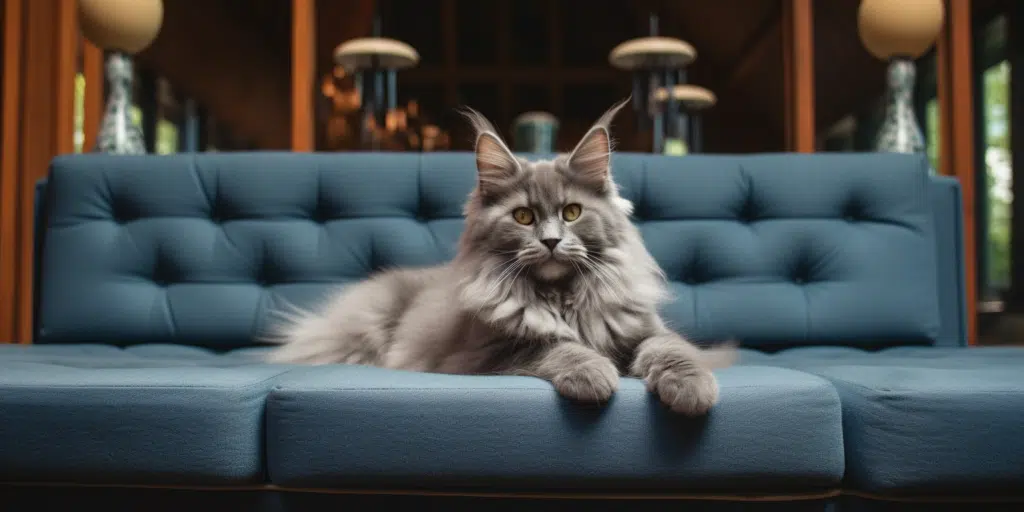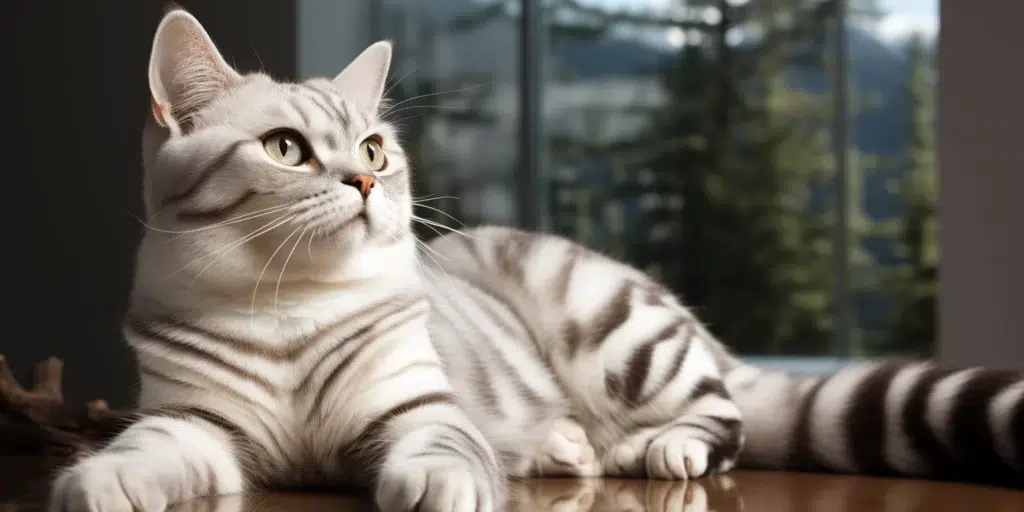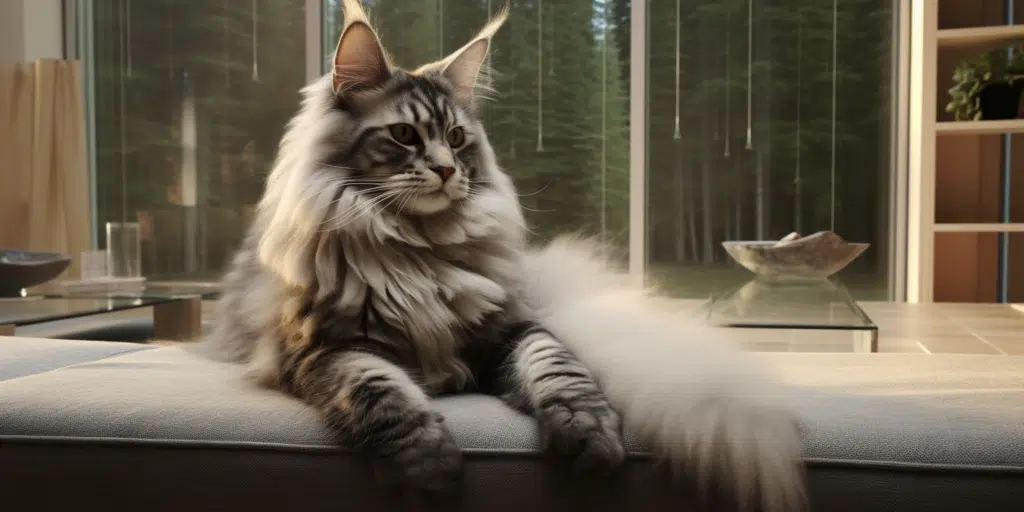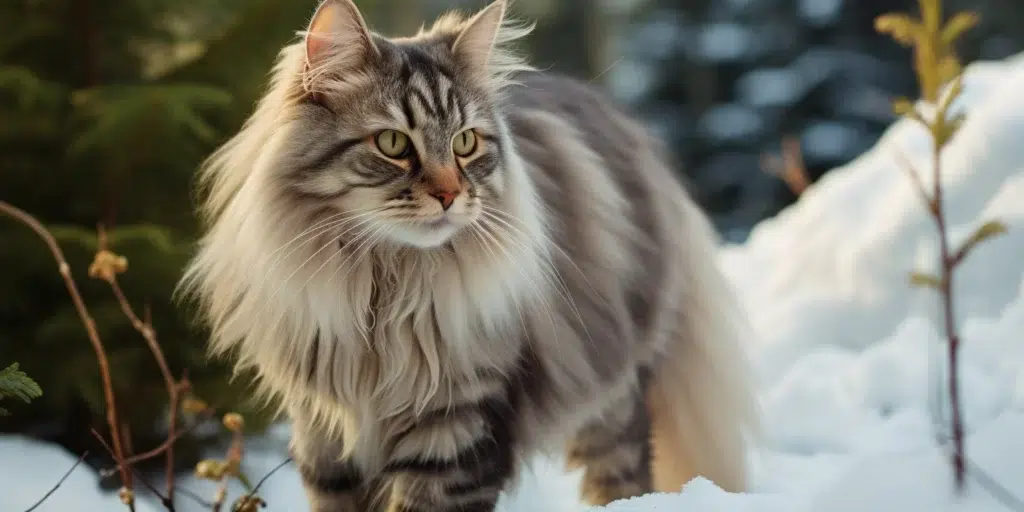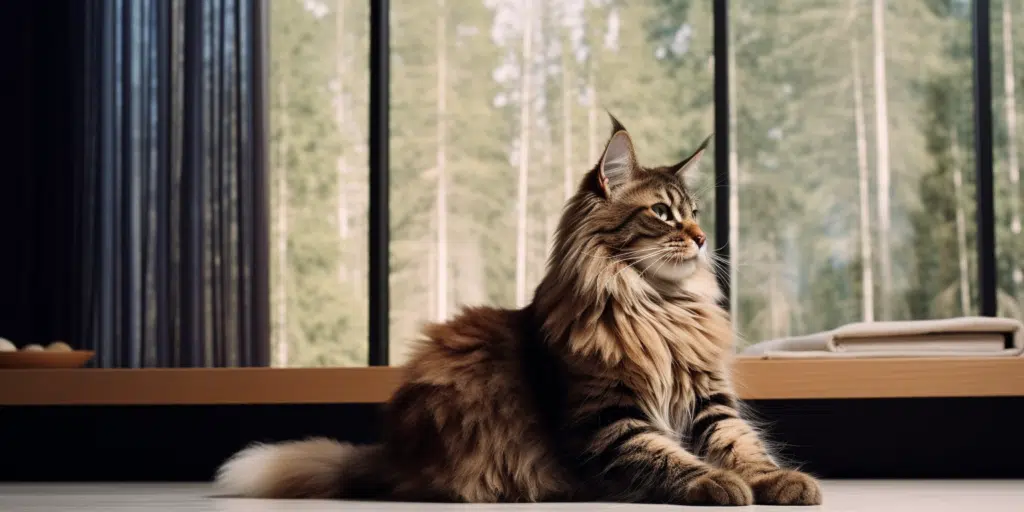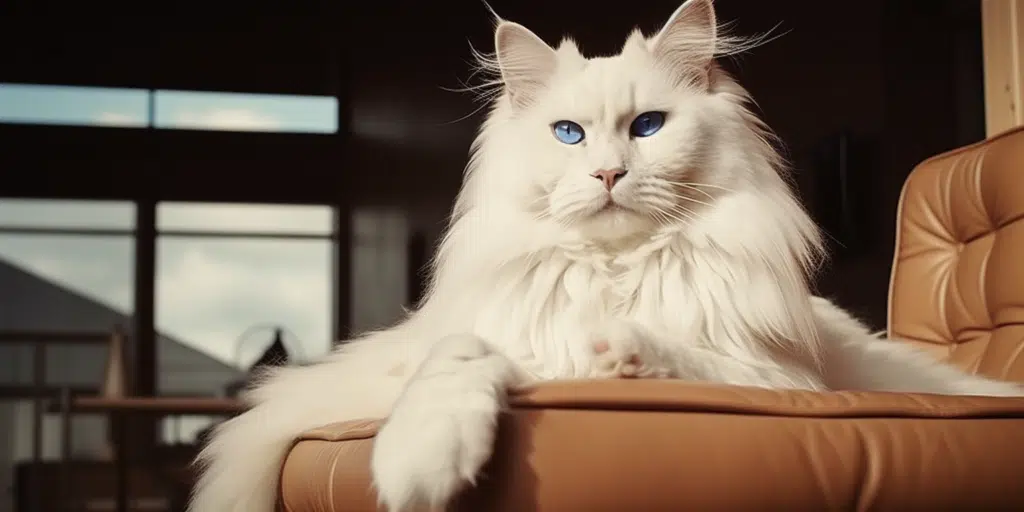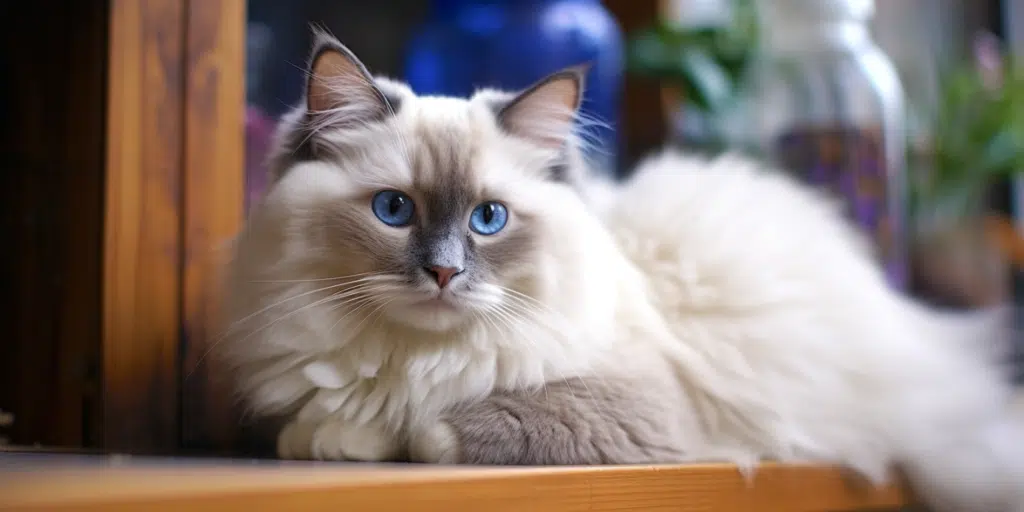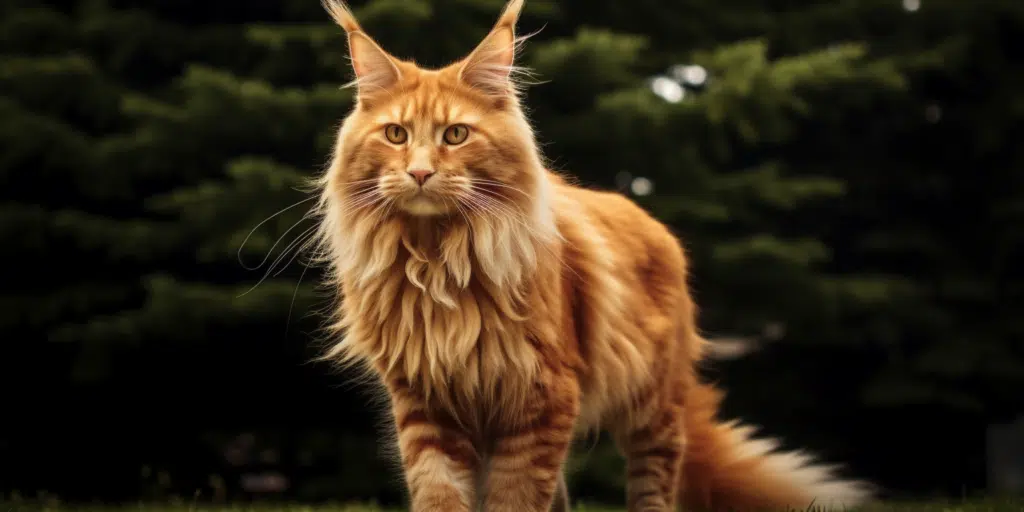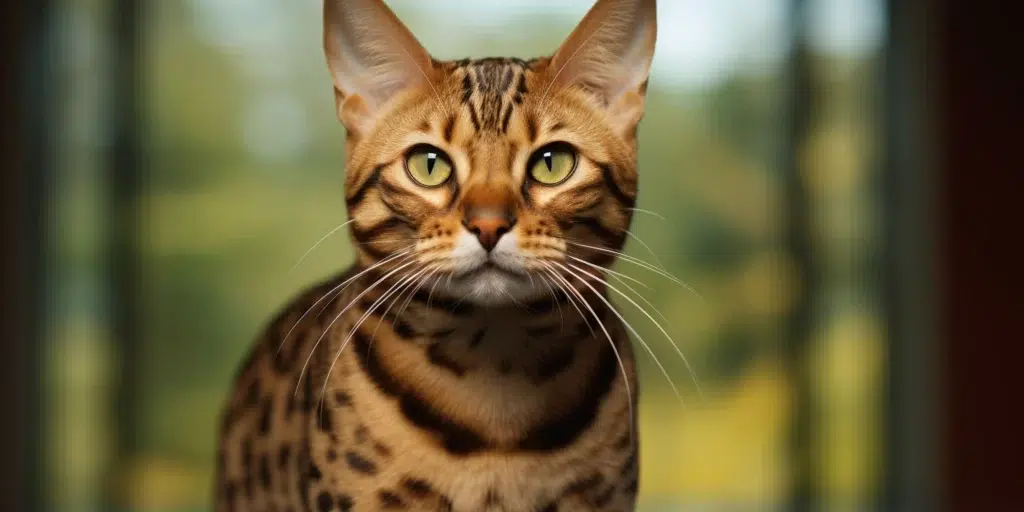When it comes to cat breeds, the majestic Maine Coon vs other breeds is often the topic of interest for many cat lovers. Known for their gentle disposition, stunning appearance, and impressive size, these feline giants capture hearts with ease.
The Maine Coon is not only one of the oldest natural breeds in North America, specifically native to the state of Maine, but it’s also one of the largest domesticated cat breeds available.
But how exactly does the Maine Coon differ from other cats? That is what we’ll delve into, comparing their physical and temperamental attributes to offer a thorough understanding.
In this blog, we will compare the beloved Maine Coon with regular house cats as well as with popular breeds like the Norwegian Forest Cat and the Siberian.
Let us take a closer look at how the Maine Coon stands shoulder to shoulder with other beloved feline companions.
Maine Coon Vs American Shorthair
When comparing the Maine Coon with the American Shorthair, which is often representative of the regular house cat, there are several distinct differences to note.
First and foremost, the physical attributes of the Maine Coon dwarf those of the regular house cat, with male Maine Coons tipping the scales at an impressive 18-22 pounds compared to much smaller American Shorthair. Additionally, the Maine Coon stands taller and grows longer.
Lifespan and shedding also show notable contrasts. While Maine Coons have a lifespan of around 12.5 to 15 years, the American Shorthair can live anywhere from 15 to 20 years. Interestingly, despite their longer fur, Maine Coons have relatively low shedding, whereas American Shorthairs experience medium levels of shedding.
The two breeds, however, share high levels of energy and affection which make them excellent companions. These attributes, among others, give character to each breed and can widely influence an individual’s choice of pet based on lifestyle and personal preferences.
Let’s take a closer look at the comparison in a concise table:
| Maine Coon | American Shorthair | |
|---|---|---|
| Average height (Male): | 10-16 inches | 8-10 inches |
| Average weight (Male): | 18-22 lb | 11-15 lb |
| Lifespan: | 12.5-15 years | 15-20 years |
| Shedding Level: | Low | Medium |
| Affection Level: | High | High |
| Energy Level: | High | Medium-High |
| Trainability: | Good | Moderate |
Maine Coon Vs Norwegian Forest Cat
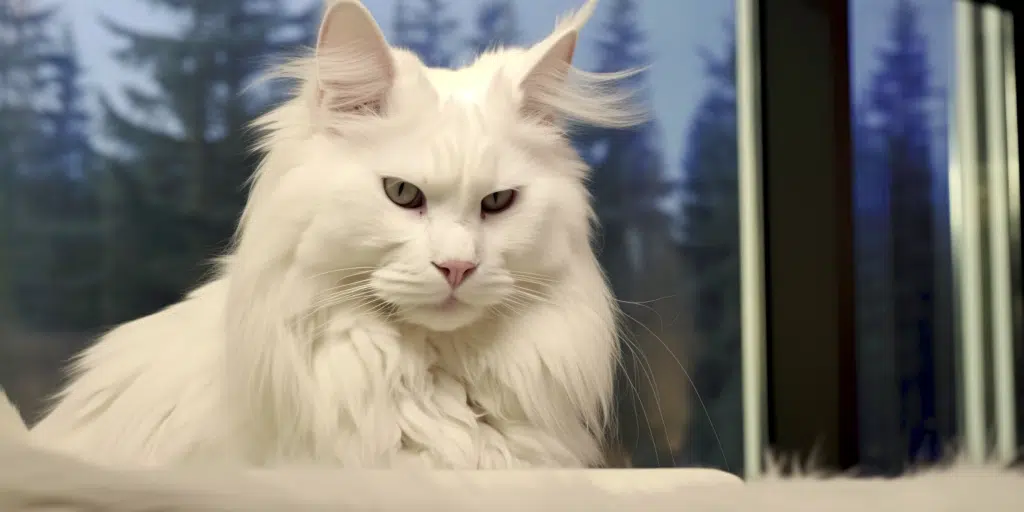
The Maine Coon and the Norwegian Forest Cat are often mistaken for one another due to their size and fluffy coats; however, there are differences that set them apart. The male Norwegian Forest Cat typically weighs less, ranging from 12-16 lbs, a subtle yet notable difference from the heftier Maine Coon males.
In terms of height, the Maine Coon edges out slightly over the Norwegian Forest Cat, which has a height of 9-12 inches.
Regarding lifespan, both breeds have relatively similar expectancies, with the Maine Coon living an average of 12.5 to 15 years and the Norwegian Forest Cat sitting comfortably at 14 to 16 years.
A striking difference is observed in shedding; the Maine Coon’s lower shedding is distinctively different from the Norwegian Forest Cat, which tends to have higher shedding levels due to its thick, water-repellent coat, making it essential for owners to be prepared for some extra grooming.
The energy levels between these two breeds also differ, with the Maine Coon exhibiting a high energy level in contrast to the moderate energy level of the Norwegian Forest Cat. This can make a Maine Coon more demanding in terms of play and interaction.
Affection levels in Norwegian Forest Cats lean towards the moderate, making them somewhat more independent than the extremely sociable Maine Coon.
Let’s break it down in a table:
| Maine Coon | Norwegian Forest Cat | |
|---|---|---|
| Average height (Male): | 10-16 inches | 9-12 inches |
| Average weight (Male): | 18-22 lb | 12-16 lb |
| Lifespan: | 12.5-15 years | 14-16 years |
| Shedding Level: | Low | High |
| Affection Level: | High | Medium |
| Energy Level: | High | Medium |
| Trainability: | Good | Good |
Maine Coon Vs Siberian
When comparing the Silver Maine Coon to the Siberian cat, while both hail from snowy, northern climates and have dense, water-repellent coats, several peculiarities differentiate them.
Weight varies more in Siberians, as males can range between 10-18 lbs, which overlaps significantly with both female and male Maine Coon weight ranges.
Height-wise, Siberians are somewhat shorter, usually reaching only 9-11 inches compared to the Maine Coon’s taller stance.
Siberians have an extended lifespan that can go up to 18 years, potentially surpassing the Maine Coon’s 15-year average. The shedding level of Siberians falls between low and medium, which is fairly comparable to the Maine Coon’s low shedding.
Both breeds are known for being relatively high in energy and affectionate, making either a suitable option for families that have time to devote to their furry companions. The main distinctions lie in the finer points of physical appearance and longevity, with personal preference often being the deciding factor for prospective owners.
Here’s what the comparison looks like in a table format:
| Maine Coon | Siberian | |
|---|---|---|
| Average height (Male): | 10-16 inches | 9-11 inches |
| Average weight (Male): | 18-22 lb | 10-18 lb |
| Lifespan: | 12.5-15 years | 10-18 years |
| Shedding Level: | Low | Low-Medium |
| Affection Level: | High | High |
| Energy Level: | High | Medium |
| Trainability: | Good | Good |
Maine Coon Vs Savannah Cat
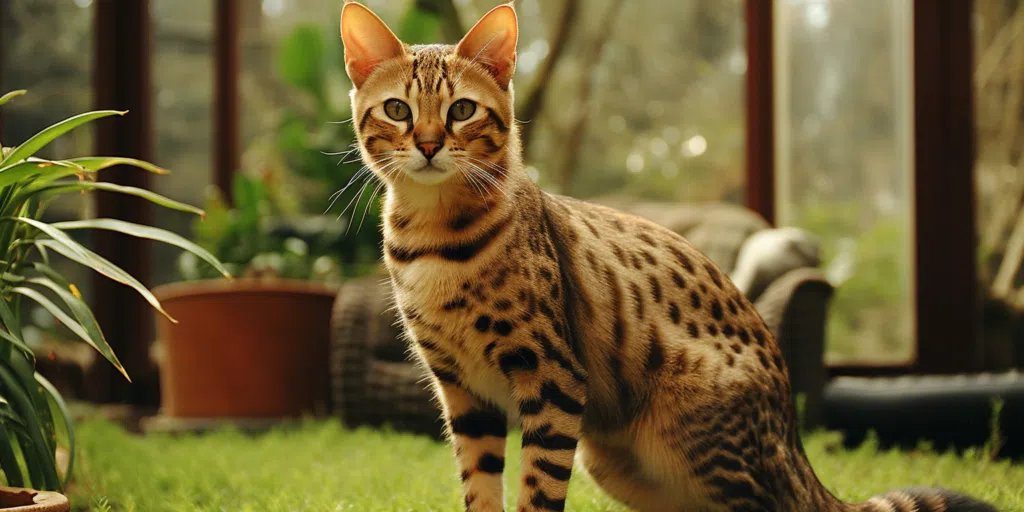
The Maine Coon vs Savannah Cat discussion introduces two very distinct and remarkable breeds, both noted for their sizeable presence and exotic appearance. The Savannah Cat is a hybrid breed, a cross between a domestic cat and the wild African serval, which manifests in its unique spotted coat and long legs.
Male Savannahs are particularly large, ranging from 16 to 25 pounds, standing at a height of 14-17 inches, which pits them against the sizable Maine Coon quite competitively.
The Savannah Cat not only tops the scales in weight but also commands attention through its impressive lifespan, which can be as long as 20 years. The height of the Savannah Cat is particularly worth noting, as it can surpass the Maine Coon with a standing height of up to 17 inches.
The Savannah’s energy level can be described as vigorously high, similar to the Maine Coon, and they boast a high level of affection, which endears them to their human companions. Shedding for the Savannah is characterized as low to medium, which is slightly different from the Maine Coon’s generally low shedding.
The choice between a Savannah Cat and a Maine Coon might come down to a desire for the exotic mixed with the familiar.
Illustrated in a simplified table format:
| Maine Coon | Savannah Cat | |
|---|---|---|
| Average height (Male): | 10-16 inches | 14-17 inches |
| Average weight (Male): | 18-22 lb | 16-25 lb |
| Lifespan: | 12.5-15 years | 12-20 years |
| Shedding Level: | Low | Low-Medium |
| Affection Level: | High | High |
| Energy Level: | High | High |
| Trainability: | Good | Can be challenging |
Maine Coon Vs Ragdoll
Now, let us consider the Maine Coon in comparison with the Ragdoll, a breed known for its docile personality and tendency to relax in the arms of its owner like a child’s ragdoll, hence the name.
Male Ragdolls typically weigh between 10 to 15 pounds, aligning closely with the female Maine Coon but lighter than the males of the breed. At a height of 9-11 inches, Ragdolls are generally shorter than Maine Coons.
One of the most distinguishing characteristics of the Ragdoll is its energy level, which is markedly lower than that of the Maine Coon. This makes Ragdolls a favorite among those who prefer a more laid-back and tranquil feline companion.
Both breeds share a similarly high affection level, making them endearing pets in family settings. Shedding in Ragdolls is low to medium, which is slightly higher than that of the Maine Coon, but still manageable for most owners.
Both breeds have a lifespan of 12-15 years, making them long-term companions for their human families. Ultimately, the choice between a Ragdoll and a Maine Coon might boil down to a preference between energetic and mellow dispositions.
Here’s the comparison laid out in a table:
| Maine Coon | Ragdoll | |
|---|---|---|
| Average height (Male): | 10-16 inches | 9-11 inches |
| Average weight (Male): | 18-22 lb | 10-15 lb |
| Lifespan: | 12.5-15 years | 12-15 years |
| Shedding Level: | Low | Low-Medium |
| Affection Level: | High | High |
| Energy Level: | High | Low-Medium |
| Trainability: | Good | Good |
Maine Coon Vs Bengal
Comparing the Maine Coon to the Bengal cat presents a stark difference in not just physicality but also temperament and activity levels. Bengals are recognized for their wild-like spotted or marbled coats stemming from their Asian leopard cat ancestry, creating an appearance quite distinct from the Maine Coon’s.
In terms of weight, Bengals are lighter with males ranging from 10 to 15 pounds, contrasting with the heavier Maine Coons. They also have a shorter stature, averaging 8-10 inches in height.
Bengals have a lifespan that is closely matched with Maine Coons, at 12-16 years. They are characterized by low shedding levels, similar to Maine Coons, making them suitable for individuals who prefer less fur around the house.
The Bengal’s energy level is placed between medium and high, suggesting a need for regular interactive play and mental stimulation, which can be adequately met by an active family or individual. Like the Maine Coon, Bengals are highly affectionate and enjoy the company of their human counterparts, making either breed an engaging pet.
The choice between a Bengal and a Maine Coon may be influenced by the potential owner’s willingness to engage with a more active, albeit smaller, breed.
Outlined in a comparison table:
| Maine Coon | Bengal | |
|---|---|---|
| Average height (Male): | 10-16 inches | 8-10 inches |
| Average weight (Male): | 18-22 lb | 10-15 lb |
| Lifespan: | 12.5-15 years | 12-16 years |
| Shedding Level: | Low | Low |
| Affection Level: | High | High |
| Energy Level: | High | Medium-High |
| Trainability: | Good | Moderate to Good |
Conclusion
In summary, the Maine Coon cat holds its own in comparisons with regular house cats and other popular breeds. With its distinctive physical characteristics, social nature, and vivacious personality, the Maine Coon can be quite different from other cats one may encounter.
Yet, these differences are what make each breed unique and valued among feline enthusiasts. Choosing the right breed depends on a variety of factors including but not limited to space, time, family, and personal preference.
No matter the breed, cats have a way of finding a special place in our homes and hearts, but understanding their differences helps us to appreciate their unique place in the feline world even more.
